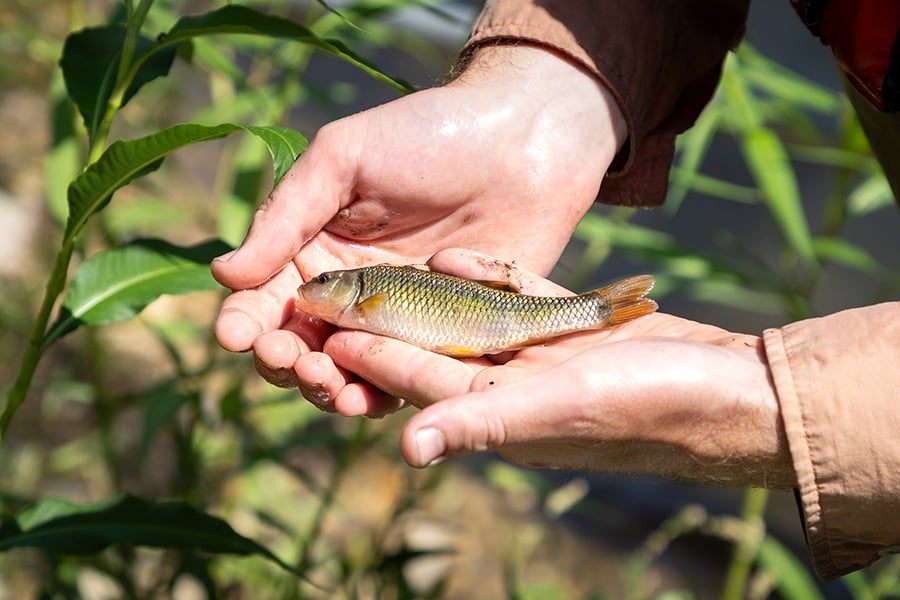
News Release
Fish Return to Salt Creek After Graue Mill Dam Removal
Data show native fish are returning as habitat improves
Recent fish sampling at Fullersburg Woods Forest Preserve in Oak Brook has confirmed what conservationists hoped: Fish are once again swimming freely upstream in Salt Creek following the late 2023 removal of the Graue Mill dam.
The Midwest Biodiversity Institute, a nonprofit scientific organization focused on stream monitoring and habitat assessment, recently completed its first round of fish sampling following the dam’s removal. The team documented eight native fish species previously found only downstream of the former dam location: hornyhead chub, emerald shiner, rosyface shiner, central stoneroller, smallmouth bass, blackside darter, logperch, and northern pike.
“These exciting results show real ecological progress,” said Erik Neidy, director of natural resources for the Forest Preserve District of DuPage County. “Fish that were blocked by the dam are now moving freely, and the stream is on a solid path to recovery.”
The removal was part of a larger effort to restore more than a mile of Salt Creek through a partnership between the Forest Preserve District and the DuPage River Salt Creek Workgroup, a nonprofit coalition of local governments, waste-water treatment facilities, environmental groups, and engineers working to improve water quality and stream health. The group’s 2020 restoration plan called for removing the dam, stabilizing the streambank, enhancing aquatic habitat, and planting native vegetation. Although funding from the workgroup and its members supports numerous projects in the region, the Metropolitan Water Reclamation District of Greater Chicago funded the majority of the Graue Mill dam removal project.
Forest Preserve District and DuPage River Salt Creek Workgroup restoration efforts along the creek continued in 2025 with the addition of 50,000 native wetland plugs to areas where invasive plants had previously been removed. Blueflag iris, swamp milkweed, marsh blazing star, and other flowers will support pollinators and add long-term structure to the wetland ecosystem. In the coming years, another 15,000 plugs and over 350 trees and shrubs will be added throughout floodplains, wetlands, woodlands, and other areas at the preserve.
The work to restore Salt Creek isn’t done yet, but with improved habitat, cleaner water, and native fish returning, the results are already beginning to show.
About the Forest Preserve District of DuPage County
The Forest Preserve District of DuPage County improves the quality of life for all DuPage County residents. Its 26,000 acres of woodlands, prairies, wetlands, and waterways contribute to cleaner air and water, help with flood control, create vital habitats for wildlife, and provide safe spaces where people can boost their physical and mental health. More than 5.9 million people visit its 60 forest preserves, 175 miles of trails, seven education centers, and scores of programs each year. For information, call 630-933-7200 or visit dupageforest.org, where you can also link to the District’s e-newsletter and Facebook, X, Instagram, YouTube, and TikTok pages.